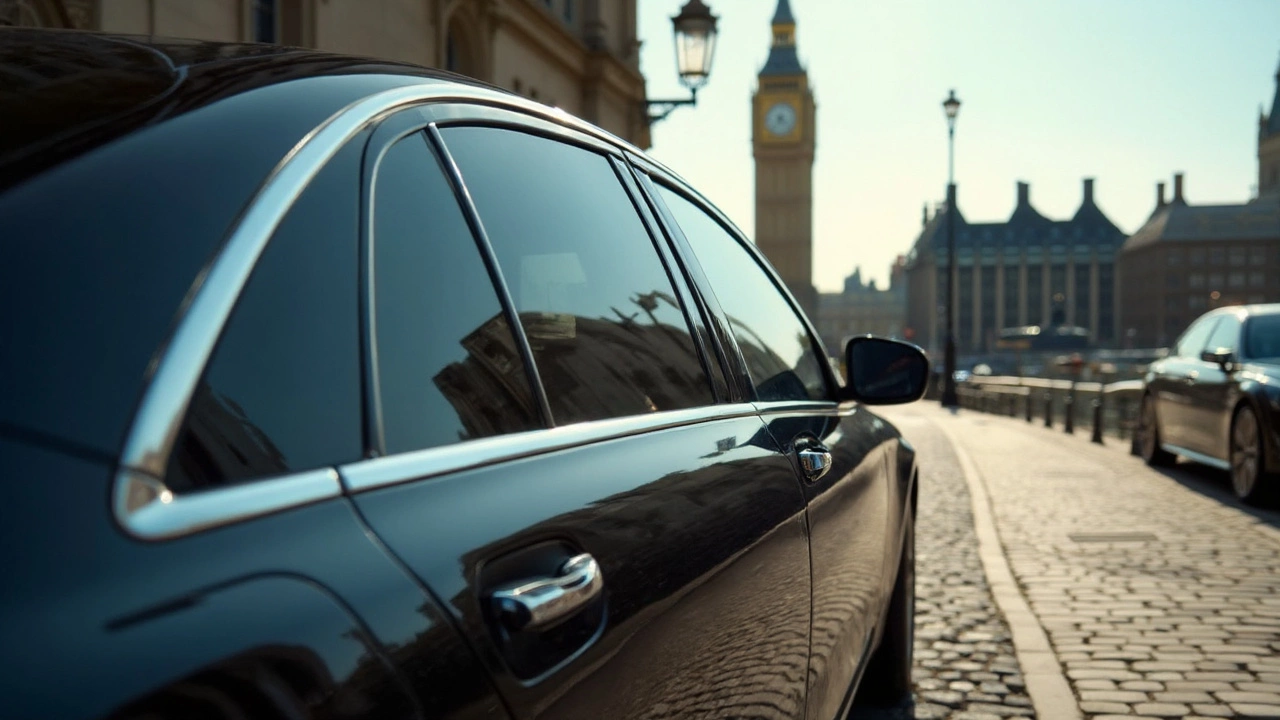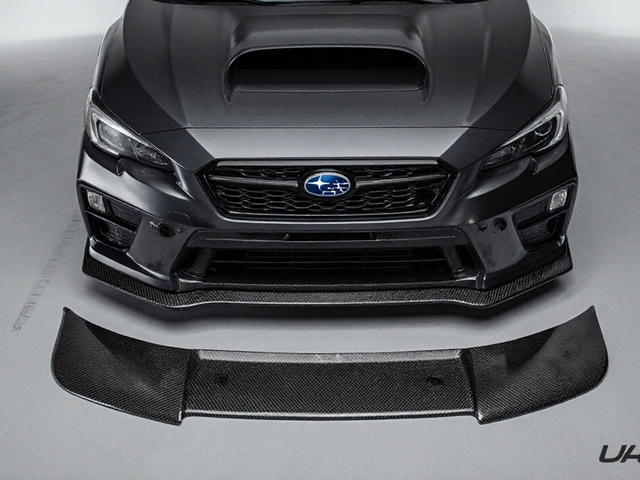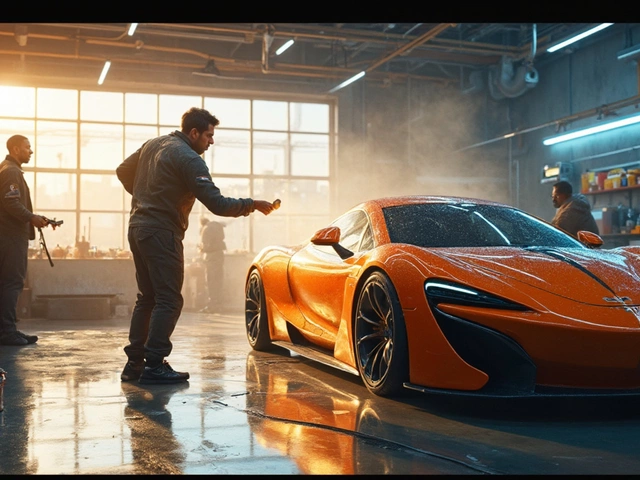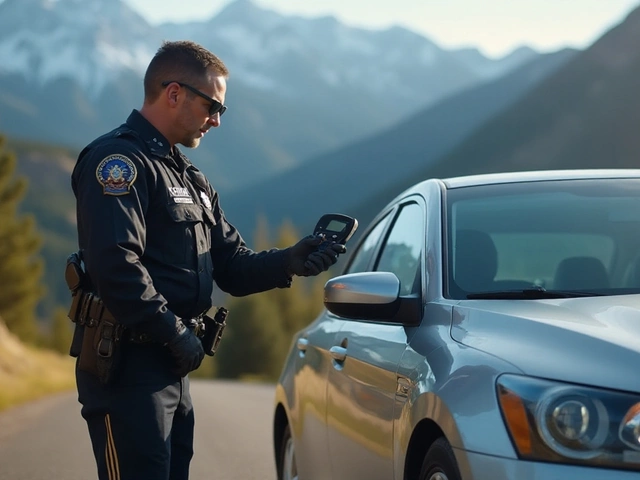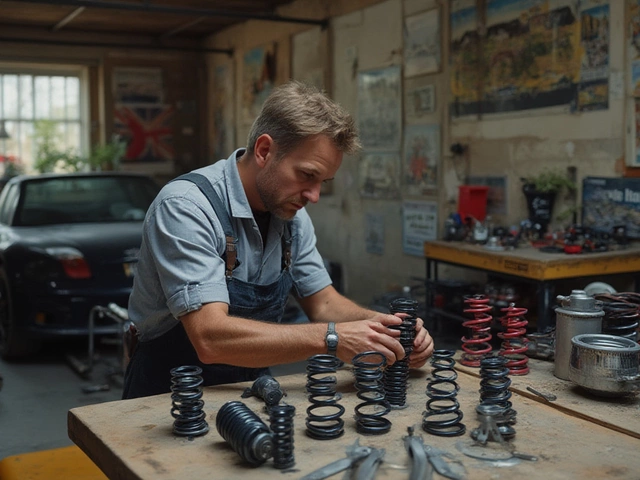When it comes to window tinting, one number that often pops up is 30 tint. But what does that really mean? Simply put, the percentage refers to the amount of visible light transmission (VLT) allowed through the window. So, with a 30 tint, about 30% of light gets in. Not too dark, but definitely not clear either.
You might be wondering if 30 tint is dark enough for your needs. Well, it gives you a sleek look without making things too gloomy inside. It's a popular choice because it strikes a balance between privacy, aesthetics, and enough visibility for safe driving.
It's important to know, though, that the final appearance can differ based on factors like the type of glass and the tint brand. And don't forget the legal considerations! Different regions have varying laws about how dark your car windows can be. A quick check on local regulations can save you from future headaches.
- Understanding Tint Percentages
- The Look and Feel of 30 Tint
- Comparisons with Other Tint Levels
- Benefits of 30 Tint
- Considerations Before Tinting
- Tips for Choosing the Right Tint
Understanding Tint Percentages
Alright, let’s dive into the numbers behind window tint and what they actually mean. Tint percentages might sound a bit technical, but they’re super important when you’re deciding how much light you want coming through your windows.
Each tint percentage refers to the visible light transmission (VLT). This is the percentage of light a car tint allows to pass through. Essentially, a lower percentage means a darker tint. If you have a 20% tint, only 20% of the sunlight enters your vehicle.
The 30 tint percentage is often called a ‘moderate’ or ‘mid-level’ tint. It’s a sweet spot for many because you get a balance of privacy and visibility. A fun fact? Many OEM (original equipment manufacturer) tint levels around the globe are typically 15-26%. So, if you go with 30%, your tint might even be lighter than some factory settings!
Common Tint Levels and Their Uses
- 5% Tint: Often seen in limos, it’s the darkest standard tint available.
- 15-20% Tint: Adds a good level of privacy without making windows super dark.
- 30% Tint: A popular choice for everyday drivers, balancing shade and brightness.
- 50% Tint: Great for UV protection and reducing glare without darkening the windows too much.
Choosing the right tint involves more than just how it looks. There are legal aspects and safety considerations, too. Regions vary widely on what's acceptable, typically allowing around 30% for front side windows, sometimes less for the back.
Legal Tint Standards by Country
| Country | Front Side Windows | Rear Side Windows |
|---|---|---|
| USA (average) | 28-70% | Varies |
| Australia | 35% | 20-35% |
| UK | 70% | No limitation |
Always check local regulations before picking a tint, because even a slight variance can cause issues if you're pulled over. And, don't forget, even the perfect window tint won't do much if you can't see out clearly at night!
The Look and Feel of 30 Tint
When you first see a 30 tint, you might notice it offers a balanced shade. It provides enough darkness to enhance privacy while still being light enough for you to see clearly inside, whether you're behind the wheel or just walking by.
How does it actually look during the day? Well, it tames the glare without overwhelmingly darkening your view. It's subtle enough to be practical but noticeable enough to give your car an upgraded, sleek appearance. Inside, you’ll get relief from annoying heat but won't feel like you're in a cave. This is why it's a favorite for people who want function without sacrificing style.
Driving Experience with 30 Tint
One of the reasons many car folks go for a 30 tint is how it enhances the driving experience. The balance it strikes is great for reducing eye strain, especially when the sun's out being its usual blinding self. You'll also find the tint significantly cuts down on interior fading and damage from UV rays, which can save you a pretty penny in long-term car maintenance.
Evening and Night Views
Now, how does a 30 tint fare when the sun goes down? At night, it offers just the right amount of visibility. You won't be squinting to see street signs or pedestrians, and oncoming headlights get toned down a notch. That said, it might take a bit of getting used to if you're not familiar with any kind of tinting.
As a tip, if you're considering a tint, always try to get a glimpse of it in different lighting conditions. This way, you'll know exactly what you're signing up for.
Comparisons with Other Tint Levels
So, you're curious how that 30 tint holds up against other shades? Let's break it down. A common choice people also go for is 50 tint. It lets in about half of the sunlight. It's lighter than 30 tint, giving a bit more visibility but less privacy.
On the flip side, you have the darker shades like 20 or even 5 tint. A 20 tint is darker than 30, allowing in just 20% of light. This level starts to make a significant difference in hiding what's inside your car, but it will darken your interior more too. Then there's the super-dark 5 tint, often called 'limo tint,' which only lets in 5% of light. It offers maximum privacy but can be problematic during nighttime driving.
Here's a quick look at how these different tints stack up:
| Tint Level | Light Transmission (%) | Common Uses |
|---|---|---|
| 50 Tint | 50% | Good for UV reduction with good visibility |
| 30 Tint | 30% | Balance of privacy and visibility |
| 20 Tint | 20% | Increased privacy, still usable in daylight |
| 5 Tint | 5% | Maximum privacy, limo look, challenging visibility at night |
Choosing the right shade isn't just about looks. It's about function too. Consider what you'll use your vehicle for and when you'll be driving most. Remember, your choice could affect not just the style of your ride, but also your safety on the road.
And just a heads-up, the darker you go, the more likely you are to run into legal issues. Always double-check local laws to make sure you're in the clear before going ahead with a darker tint.

Benefits of 30 Tint
Choosing a 30 tint for your car windows can do more than just add a cool, sleek look. There’s a range of benefits that come with this specific shade. Let’s dive into some of the key perks so you can see why it’s a hit among many car owners.
Privacy and Security
One of the big draws of a 30 tint is the added privacy it provides. You get a decent level of coverage which makes it harder for people outside to peek into your car. It's not too dark that you feel like you're living in Batman’s Batmobile, but it does give you enough shade to feel a bit more secure.
Heat Reduction
Summer days can turn your car into a literal oven. A window tint like 30 can help cut down on the amount of heat that pours in, thanks to its ability to reduce solar heat by around 50%. It doesn’t block out all the sunlight, but offers enough shade to make a noticeable difference. Your car stays cooler, so you're less reliant on that air conditioning.
UV Protection
We all know how harmful UV rays can be, both to our skin and our car interiors. A 30 tint can filter out a lot of those nasty rays, keeping you and your passengers safer from sun damage. It also helps prolong the life of your upholstery, dashboard, and other surfaces inside your car by preventing fading.
Aesthetic Appeal
Let’s be real, a car just looks sharper with a well-done tint. The 30 shade is often chosen because it gives a modern look without going too extreme. It’s like wearing those trendy sunglasses that add the right touch of style!
Glare Reduction
Driving with sunlight glaring through your window is not just annoying; it’s dangerous. A 30 tint reduces glare from the sun and even from oncoming headlights at night. This improvement in visibility can mean safer drives.
Cost-Effective
Compared to darker tints with fancy features, the cost of installing a 30 tint is generally on the lower side, offering great value for the range of benefits you get. It's a sweet spot for those who want both form and function without emptying their wallets.
| Benefit | Value |
|---|---|
| Heat Reduction | Up to 50% |
| UV Protection | Blocks 99% of UV rays |
Considerations Before Tinting
Before jumping into the world of window tinting, it's important to weigh a few key factors so that your window tint choice truly matches what you need. From practical considerations to everyday usability, there's a lot to think about when it comes to a 30 tint.
Legal Restrictions
One of the first things to check is your local tint laws. Each state or region has different rules about how dark you can go, and you don’t want a stylish ride to come with a hefty fine. Often, front windows have stricter requirements compared to rear windows.
Purpose and Functionality
Why are you tinting the windows? Is it for privacy, heat rejection, or just aesthetics? Knowing your main reason helps narrow the choices. A 30 tint might be perfect if you're looking for moderate privacy while keeping road visibility decent.
Impact on Driving
Think about your driving habits. Do you often drive at night? A darker tint like 30% could slightly impact visibility in low light conditions. Considering how comfortable you feel with reduced visibility at night or during gloomy weather is crucial.
Quality of Tint Film
Not all tint films are created equal. Choose a reputable brand that offers good UV protection, longevity, and doesn’t bubble or discolor over time. A higher quality tint might be a bit pricier, but it often pays off in the long run.
Budget
Tinting isn't just about selecting a shade; it's also about the installation cost. Prices can vary based on the shop, brand, and car model. It's useful to set a budget beforehand so you don't overextend financially.
Decision-Making Stats
| Factor | Consideration Level (1-5) |
|---|---|
| Legal Compliance | 5 |
| Privacy Needs | 4 |
| Driving Habits | 3 |
Taking the time to think about these factors can yield dividends in satisfaction. The right tint should enhance your driving experience, offering benefits without unwanted surprises.
Tips for Choosing the Right Tint
Picking the right window tint can feel a bit overwhelming, but focusing on a few key factors can make it a breeze. Here are some handy tips to guide you through the process:
Understand Your Local Laws
Before even thinking about which window tint to get, make sure you’re aware of local regulations. Each state or region has its own rules about the darkest legal tint. Trust me, it's no fun having to remove freshly applied tint because it's against the law.
Decide on Your Main Objective
Are you tinting for privacy, UV protection, style, or all the above? If privacy is key, a 30 tint might provide a good balance. But if you spend lots of time driving in sunny conditions, consider the UV protection levels of your chosen tint.
Consider the Look and Feel
Aesthetics are important, especially if you're someone who gets joy every time you glance at your ride. A 30 tint offers a sharp look that compliments most vehicles without making them look too dark. To visualize the final effect, it's a good idea to check out cars with similar tints.
Know the Materials
Window tints come in various materials like dyed, metallic, and ceramic. Each has its perks and drawbacks. For instance, dyed tints are cheaper but might fade faster, while ceramic tints are effective at blocking heat and UV rays but cost more.
Budget Smartly
Think about what you’re comfortable spending. While it's tempting to go for the cheapest option, remember that you usually get what you pay for. Higher quality tints might cost more upfront but save money in the long run in terms of durability and performance.
Consult with a Professional
If you're unsure about doing it yourself, professional advice can be invaluable. Experts can recommend the best type of tint for your budget, taste, and specific car model. Having it done professionally can also ensure a bubble-free finish.
Here's a quick table of common tint levels and their typical uses:
| Tint Percentage | Common Uses |
|---|---|
| 50% | Reduction in glare, subtle privacy |
| 35% | Increased privacy, balanced look |
| 20% | High privacy, darker appearance |
| 5% | Maximum privacy, often called "limo tint" |
Armed with these tips, you'll be well on your way to choosing a window tint that suits your needs perfectly. Just remember, no singular choice fits everyone, so take your time and make sure it's the right tint for you.

